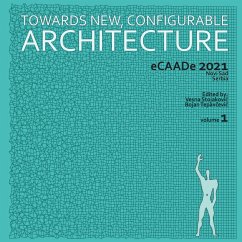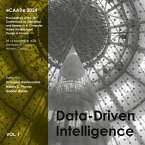Almost a hundred years after the first edition of the book ¿Towards a New Architecture¿, the problem of architecture in the age of the Industrial Revolution is relevant again. A century ago Le Corbusier advocated for a new concept of architecture based on engineering logic of the Second Industrial Revolution and mass production. At the end of the 20th century, the Third Industrial Revolution brought a digital turn in architecture, reshaping the way of thinking and making. Today, industrial revolution is already changing architecture before our eyes towards a new, configurable architecture. The notion of configuration can be described as a relative arrangement of elements in a particular system, form, figure, or other formations. Configuration represents the essence of the design process. The configurable architecture may include a process of abstract thinking through design and exploitation. It can be considered from different perspectives such as design analysis and critical thinking, creative process, digital fabrication, computational design, responsive architecture and environments, material-based design, autonomous assembly or interactive design visualization. We are already witnessing the application of configurable products in other engineering disciplines that allow end users to participate in the design process and personalize products. How will the architecture in the 21st century respond to the challenges of a new configurable approach to design production and collaboration in the following years? From mass-customization toward mass-personalization, configurable architecture is seeking for an answer to how architecture will adjust to habitual behavior of their users in the 21st century. What are the new lessons for architects in this new age, age of mass-customization? How parametric tools can enable every person to participate in the design process? What are the new tools for the design collaboration in architecture? ¿Towards a new configurable architecture¿ critically questions the notion of configuration in architecture and how it can be applied to rethinking architectural ideas, design process, representation, fabrication and utilization process. In order to specifically address some of the questions above, we have invited researchers, professors, experts and students to discuss topics such as: Computational design Rule based systems and shape grammar Building Information Modeling CAAD and education CAAD, creativity and design thinking models Smart cities, city modeling and GIS Digital fabrication and robotics Mass customization in design Digital representation and visualization VR, AR and interactive visualization Agent-based modeling and machine learning in design Simulation, prediction and evaluation in design Structure optimization and material-based design Bionics, bioprinting, living materials Collaborative, participative or responsive design Digital design for sustainable buildings Performance based design Digital heritage The first volume of the proceedings contains 58 papers while the second volume contains 59 papers. In addition to the accepted papers, the first volume is preceded by Keynote papers including keynote speakers' contributions concerning the themes of their keynote lectures and the workshops organized the days before the Conference.
Hinweis: Dieser Artikel kann nur an eine deutsche Lieferadresse ausgeliefert werden.
Hinweis: Dieser Artikel kann nur an eine deutsche Lieferadresse ausgeliefert werden.








